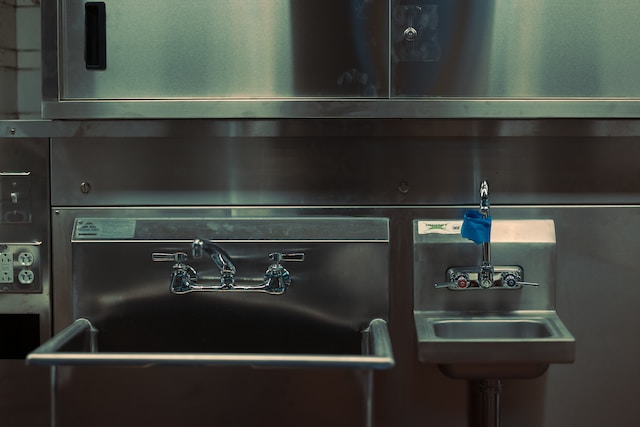Like every food business, food trucks must meet certain health and safety standards. These standards ensure the kitchen on board is clean and food-safe. Mobile food operation regulations are very similar to those of traditional commercial kitchens, including the food truck sink requirements. These requirements explain the types of sinks that must be on board and the specifications for each sink.
Basic Food Truck Sink Requirements
At a minimum, all food trucks must have a 3-compartment sink and a hand-washing sink. Certain food trucks may also need a food preparation sink. Each of these sinks will be commercial-grade and stainless steel.

The 3-compartment sink
Every food truck needs a National Sanitation Foundation-approved sink with 3 compartments of equal size and drain boards on either side. The three compartments are designated for the washing, rinsing, and sanitizing of utensils and other cooking materials – in that specific order. Each compartment of the sink must be large enough to completely submerge any cooking utensil on board. This sink must have both hot and cold running water.
Your truck may be exempt from this requirement if you only sell 100% prepackaged foods.
The handwashing sink
Frequent hand washing is an essential part of food safety, so every food truck must have a designated hand-washing sink. This sink must be accessible at all times and should never be used for purposes other than handwashing. The handwashing sink must be equipped with soap and paper towels and must have hot and cold running water as well.
The food preparation sink
Some food trucks may need a food preparation sink for washing fruits and vegetables This type of sink may not be necessary for businesses that use a separate commissary kitchen.
Water Sources and Wastewater
All food trucks must obtain hot and cold pressurized water from an approved, safe source and dispose of wastewater in a designated place. There are specific capacity requirements for potable water tanks and wastewater tanks that vary from county to county. In general, the wastewater tank needs to be at least 15% larger than the clean water tank.
These are the basic guidelines for food truck sinks, but they are not specific to any counties. Always check with your local health department to make sure you meet the standards for mobile food operations in your state. For example, these are the requirements for food trucks in San Francisco.
Before you purchase a pre-owned food truck or begin building your own, make sure you understand the food truck sink requirements. Knowing which types of sinks you will need is also an essential part of building your budget. For more information on writing your food truck business plan, check out our blog here.